I first discovered Ginataang Langka during a rainy afternoon visit to my college friend's home in Bicol, where his grandmother was cooking in their rustic kitchen.
The aroma of coconut milk simmering with young jackfruit instantly filled the air, bringing back memories of my own Lola's cooking. One spoonful of this creamy, savory dish served over steaming rice, and I was hooked.
The tender jackfruit soaked in rich gata, perfectly balanced with the umami of dried fish, created a comfort food experience I'll never forget.
This easy-to-follow recipe brings that same heartwarming provincial Filipino flavor to your kitchen, whether you're craving a taste of home or wanting to explore traditional Pinoy cooking.
While many consider langka just for desserts, this savory version will show you exactly why generations of Filipino families treasure this humble yet extraordinary dish.
Trust me, once you master this ginataang langka recipe, it'll become your go-to comfort food on rainy days, just like it did for me.
Jump to:
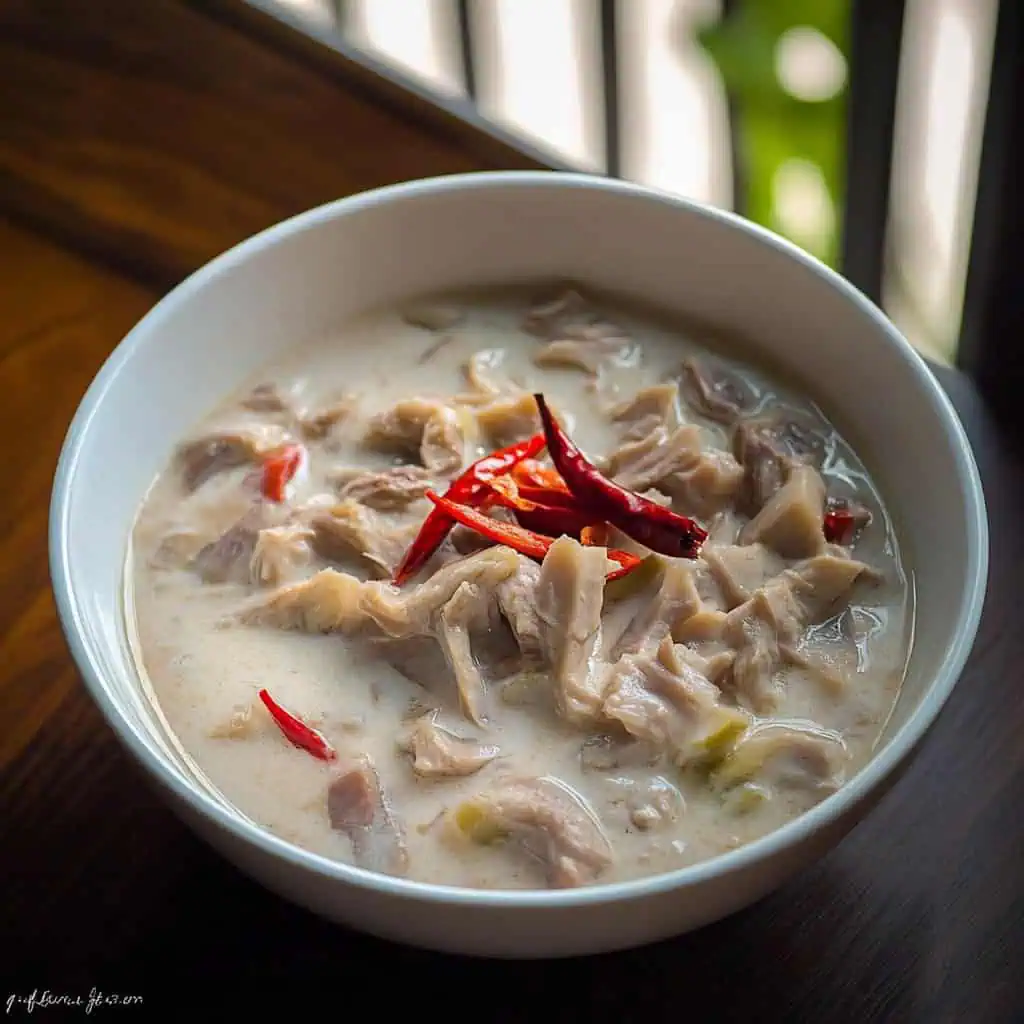
Why You'll Love This Recipe
- Perfect balance of creamy coconut milk and umami from dried fish
- Budget-friendly yet packed with nutrients
- Naturally gluten-free and dairy-free
- Can be made mild or spicy to suit your taste
- Authentic Filipino flavors that transport you to a provincial kitchen
- Great way to introduce jackfruit to your diet
Ingredients
The ingredients in Ginataang Langka create perfect harmony in this traditional Filipino dish. Young jackfruit provides a meaty yet tender texture that absorbs flavors beautifully. Coconut milk adds rich creaminess while balancing the subtle bitterness of the jackfruit.
Dried fish contributes essential umami depth and saltiness, eliminating the need for additional salt. Aromatics like garlic, onion, and tomatoes build a flavorful base, while optional chilies add customizable heat. The shrimp bouillon enhances the seafood notes and ties all flavors together.
Each component plays a crucial role in achieving the dish's signature taste, a masterful balance of creamy, savory, and subtly sweet notes that transforms humble ingredients into a comforting masterpiece.
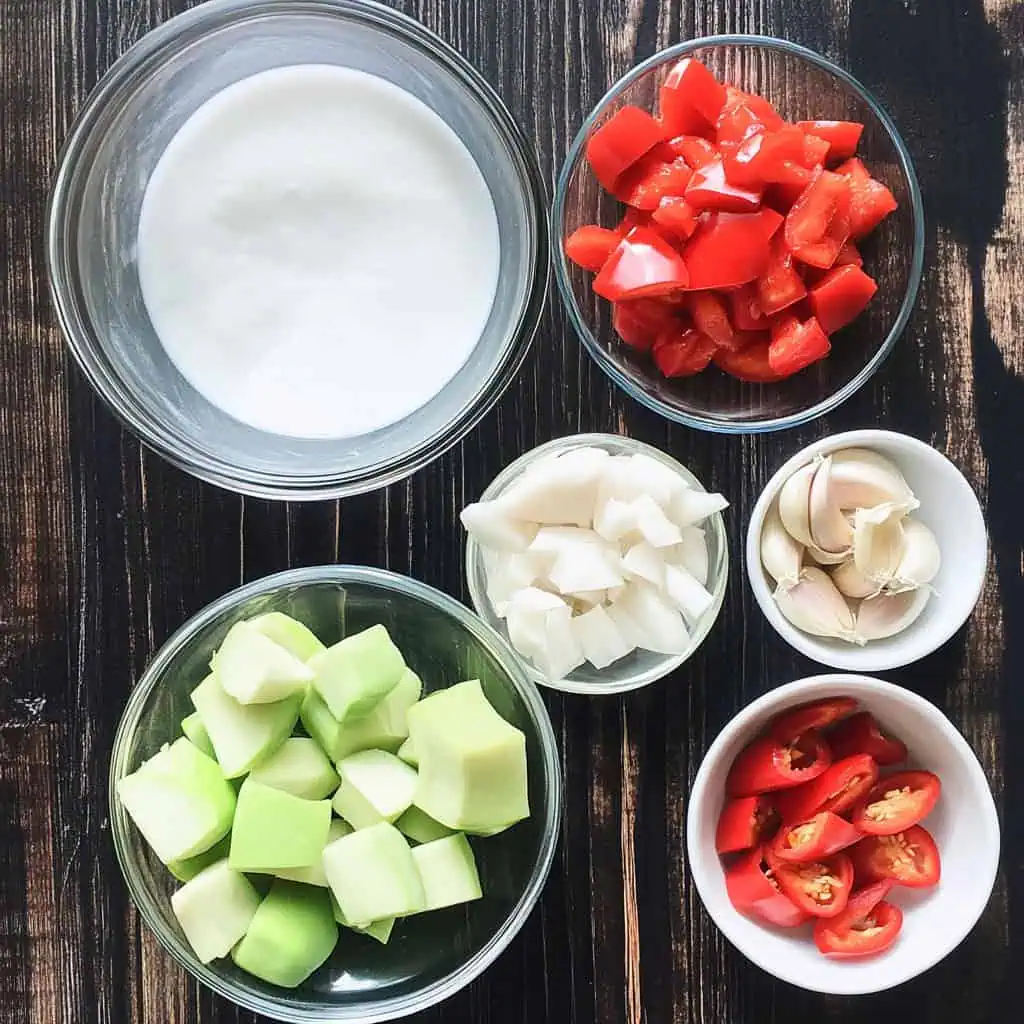
- 1 kg unripe jackfruit (langka), peeled and chopped
- 3 cups coconut milk (gata)
- ¾ cup water
- ½ cup dried fish (daing), fried and flaked
- 1 large onion, diced
- 5 cloves garlic, crushed
- ¾ cup tomatoes, diced
- 3-5 red chilies (optional)
- 1 piece shrimp bouillon cube
Equipment
- Large Wok or Deep Pan (kawali): For even heat distribution and proper reduction of coconut milk. The wide surface area also allows the jackfruit to cook evenly.
- Sharp Knife (kutsilyo): Essential for cutting through the firm texture of unripe jackfruit and removing its tough outer skin.
- Wooden Spoon (sandok): For stirring without scratching the pan. Also helps to gently mix the jackfruit without breaking it apart.
- Cutting Board (sangkalan): Preferably plastic for easy cleaning of sticky jackfruit sap that can stain wooden boards.
- Measuring Cups and Spoons (panukat): For precise measurements of ingredients to maintain the authentic flavor balance.
- Oil Splatter Screen: Optional but helpful when frying dried fish to prevent oil splatter in your kitchen.
- Colander: Useful for draining and rinsing the jackfruit to remove excess sap.
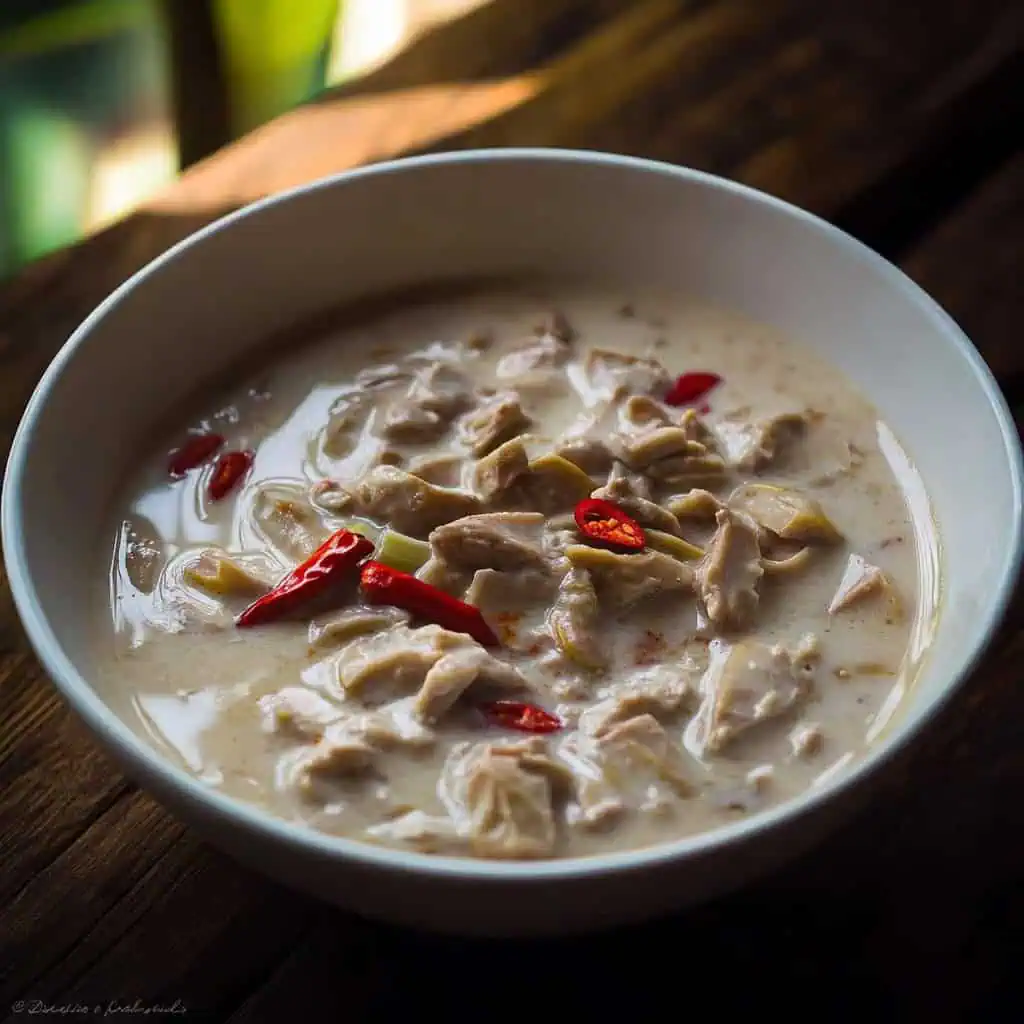
How To Make
- Begin preparing your ingredients by peeling and chopping the unripe jackfruit. Dice the onions, crush the garlic, and dice the tomatoes. If using chilies, prepare them as well. Fry the dried fish separately until crispy, then flake it into small pieces.
- Heat your wok or deep pan to medium heat (180°C/350°F) and add the coconut milk. Bring it to a gentle boil, watching carefully as coconut milk can curdle easily. Reduce the heat to medium-low (160°C/320°F) and add the crushed garlic and diced onions. Sauté these aromatics for 3-5 minutes while continuously stirring to create the "gisa" or sautéed base flavors.
- Increase the heat back to medium (180°C/350°F) and add the diced tomatoes and chilies (if using). Continue stirring to prevent lumps from forming and cook until the tomatoes soften, about 3-4 minutes. Add the fried, flaked dried fish and cook for another 5 minutes to allow the flavors to infuse into the coconut milk. Pour in the water and bring the mixture to a boil.
- Add the chopped jackfruit pieces and mix gently to combine all ingredients. Drop the shrimp bouillon cube into the mixture and reduce the heat to low (140°C/285°F). Allow everything to simmer until the liquid reduces and the jackfruit becomes tender, approximately 15-20 minutes. The sauce should be creamy but not too thick.
- To test if the jackfruit is done, pierce it with a fork – it should be tender but still maintain its shape. If the sauce becomes too thick during cooking, add warm water gradually, never cold water as it can cause the coconut milk to curdle. The dish is ready when the jackfruit is tender and has absorbed the flavors of the coconut milk and dried fish.
- Serve hot with steamed white rice.

Tips from Lola's Kitchen
- Select the perfect jackfruit: Look for firm, green specimens that don't yield when pressed. The unripe state is crucial for this savory dish.
- Prevent sticky hands: Before handling jackfruit, lightly coat your hands and knife with cooking oil to prevent the sap from sticking.
- Develop flavor through patience: Never rush coconut milk reduction. The slower you cook, the richer and more complex the flavors become.
- No waste philosophy: Don't throw away jackfruit seeds! They can be boiled separately until tender and enjoyed as a nutritious snack.
- Temperature matters: Always add warm (never cold) water if your sauce gets too thick, as cold liquid can cause the coconut milk to separate.
- Flavor layering: For an even more authentic taste, toast the dried fish slightly in a dry pan before adding it to the coconut milk.
- Manage the heat: Keep the flame consistent and low during the final simmering to avoid curdling and to allow the jackfruit to absorb flavors fully.
Substitutions
- Young jackfruit: If unavailable, green papaya or chayote squash can work as alternatives, though the texture will be somewhat different.
- Fresh coconut milk: When fresh isn't an option, use full-fat canned coconut milk (not coconut cream) for best results.
- Dried fish: Substitute with smoked fish, toasted dried anchovies (dilis), or even a combination of fish sauce and mushrooms for umami.
- Shrimp bouillon cube: Use 1-2 tablespoons of fish sauce (patis) or a fish bouillon cube instead.
- Red chilies: Green chilies provide a different heat profile, or use black pepper for a milder kick.
- Tomatoes: If fresh tomatoes aren't available, a tablespoon of tomato paste can provide similar acidity and flavor.
Troubleshooting
- Curdled Coconut Milk: If your coconut milk starts to separate, immediately lower the heat and stir gently but continuously. Add a splash of warm water while stirring to help re-emulsify the sauce.
- Tough Jackfruit: If your jackfruit remains tough after the recommended cooking time, it may be too mature. Continue cooking on low heat, adding small amounts of warm water as needed until tender.
- Too Salty: Dried fish can vary in saltiness. If your dish becomes too salty, add more coconut milk to balance it out, or add a small, peeled potato to absorb some salt (remove before serving).
- Watery Sauce: If your sauce is too thin, remove the lid and increase heat slightly to reduce the liquid. Stir occasionally to prevent sticking.
- Bitter Taste: Some jackfruits can have a slight bitterness. Adding a pinch of sugar can help balance this without making the dish sweet.
- Sap Issues: If jackfruit sap hardens on your utensils, soak them in hot water with baking soda before washing.
Storage & Reheating
- Refrigeration: Store in an airtight container for up to 3 days. The flavors actually deepen overnight, making this dish excellent for meal prep.
- Freezing: Not recommended as the texture of both the jackfruit and coconut milk sauce changes significantly when frozen and thawed.
- Reheating on Stovetop: Add a splash of coconut milk or water and reheat on low heat, stirring occasionally. This method best preserves the creamy texture.
- Microwave Reheating: Cover loosely and heat on medium power for 2-3 minutes, stirring halfway through. Be careful not to overheat as this can cause separation.
- Reviving Leftover Texture: If the dish has thickened too much in storage, gradually add warm coconut milk while reheating until the desired consistency is reached.
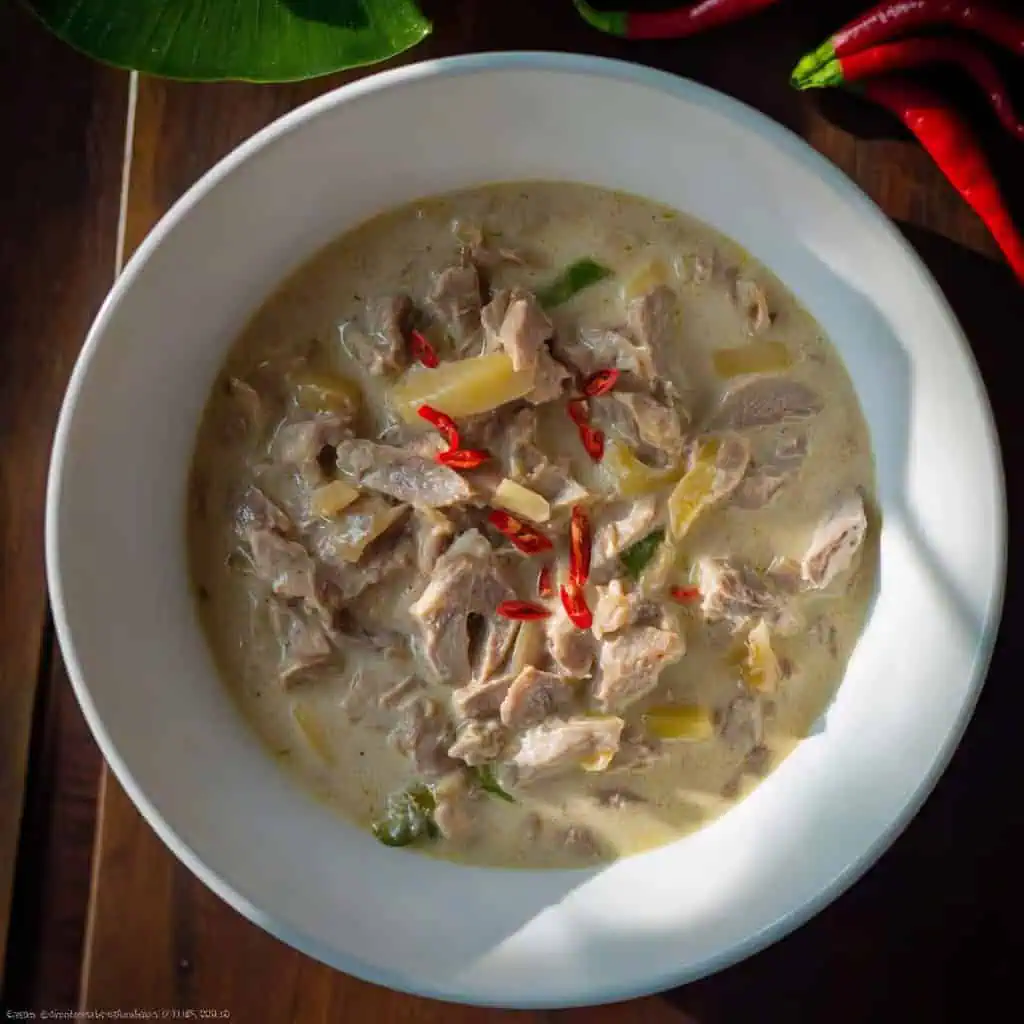
FAQ
How do I know if the jackfruit is young enough?
Young jackfruit should be firm and green with no sweet smell. The flesh inside should be pale white or light yellow, not golden yellow.
Can I use canned jackfruit?
Yes, but drain and rinse well to remove any brine or syrup. Choose jackfruit in water or brine (not syrup) and squeeze out excess moisture before cooking. Fresh is preferred for authentic texture.
Why is my sauce too watery?
This could be due to not allowing enough reduction time or using jackfruit with high water content. Cook longer on low heat uncovered to reduce liquid, or use less water initially.
Is this dish spicy?
The basic recipe is mild, but you can adjust chili quantity to taste. Traditional versions from Bicol region tend to be spicier than those from other parts of the Philippines.
Can I make this vegan?
Absolutely! Omit the dried fish and shrimp bouillon, and instead use mushroom powder, fermented tofu, or miso paste for umami depth. Many modern Filipino cooks prepare vegan versions this way.
How do I reduce the strong smell of dried fish?
Toast the dried fish well before adding to the dish, and make sure to incorporate plenty of aromatics like garlic, onion, and ginger to balance the aroma.
What's the best rice to serve with this?
Traditional steamed white rice is ideal, but for a healthier option, brown rice or adlai (Job's tears) pairs well too.
Does this dish freeze well?
Unfortunately, coconut milk-based dishes don't freeze well as they tend to separate upon thawing. It's best enjoyed fresh or within a few days.
How can I make this dish more filling?
Some regions add protein like pork belly, shrimp, or crab to make it more substantial. You can also serve it with fried fish on the side for a complete meal.
Is jackfruit nutritious?
Yes! Young jackfruit is high in fiber, potassium, and vitamin C while being low in calories, making this dish both nutritious and satisfying.
Related
Looking for other recipes like this? Try these:
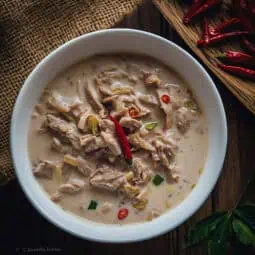
Ginataang Langka (Young Jackfruit in Coconut Milk)
Equipment
- Large Wok or Deep Pan (kawali) For even heat distribution and proper reduction of coconut milk
- Sharp knife (kutsilyo) For cutting and preparing the jackfruit
- Wooden spoon (sandok) For stirring without scratching the pan
- Cutting board (Sangkalan) Preferably plastic for easy cleaning of sticky jackfruit sap
- Measuring cups and spoons (Panukat) For precise measurements
- Oil splatter screen Optional but helpful when frying dried fish
Ingredients
- 1 kg unripe jackfruit langka, peeled and chopped [Langka: traditionally harvested young and green]
- 3 cups coconut milk gata [Gata: first extract of coconut milk]
- ¾ cup water tubig
- ½ cup dried fish daing, fried and flaked [Daing: salt-dried fish]
- 1 large onion sibuyas, diced
- 5 cloves garlic bawang, crushed
- ¾ cup tomatoes kamatis, diced
- 3-5 red chilies siling labuyo [optional]
- 1 piece shrimp bouillon cube Knorr
Instructions
- Begin preparing your ingredients by peeling and chopping the unripe jackfruit (langka). Dice the onions (sibuyas), crush the garlic (bawang), and dice the tomatoes (kamatis). If using chilies (siling labuyo), prepare them as well. Fry the dried fish (daing) separately until crispy, then flake it into small pieces.
- Heat your wok or deep pan (kawali) to medium heat (180°C/350°F) and add the coconut milk (gata). Bring it to a gentle boil, watching carefully as coconut milk can curdle easily. Reduce the heat to medium-low (160°C/320°F) and add the crushed garlic and diced onions. Sauté these aromatics for 3-5 minutes while continuously stirring to create the "gisa" or sautéed base flavors.
- Increase the heat back to medium (180°C/350°F) and add the diced tomatoes and chilies (if using). Continue stirring to prevent lumps from forming and cook until the tomatoes soften, about 3-4 minutes. Add the fried, flaked dried fish and cook for another 5 minutes to allow the flavors to infuse into the coconut milk. Pour in the water and bring the mixture to a boil.
- Add the chopped jackfruit pieces and mix gently to combine all ingredients. Drop the shrimp bouillon cube into the mixture and reduce the heat to low (140°C/285°F). Allow everything to simmer until the liquid reduces and the jackfruit becomes tender, approximately 15-20 minutes. The sauce should be creamy but not too thick.
- To test if the jackfruit is done, pierce it with a fork – it should be tender but still maintain its shape. If the sauce becomes too thick during cooking, add warm water gradually, never cold water as it can cause the coconut milk to curdle. The dish is ready when the jackfruit is tender and has absorbed the flavors of the coconut milk and dried fish.
- Serve hot with steamed white rice (kanin). This dish can be stored in an airtight container in the refrigerator for up to 3 days. When reheating, use low heat and add a splash of coconut milk if needed to maintain the creamy consistency. Remember to stir gently to avoid breaking up the jackfruit pieces.
Tips from Lola's Kitchen
- Choose jackfruit that's firm and green - if it yields to pressure, it's too ripe
- To prevent sticky hands, lightly oil your knife and hands before cutting jackfruit
- Don't rush the coconut milk reduction - slow cooking develops better flavor
- Save the jackfruit seeds - they can be boiled and eaten as a snack
- If sauce is too thick, add warm water gradually, not cold
Nutrition
The Story Behind Ginataang Langka (Young Jackfruit in Coconut Milk)
In every corner of the Philippines, you'll find unique ways of cooking with gata (coconut milk), but few dishes showcase its versatility quite like Ginataang Langka. This beloved dish originated in the coconut-rich regions of Southern Luzon, particularly in provinces like Bicol, Quezon, and the Visayas, where both jackfruit trees and coconut palms grow abundantly in local backyards.
What makes this dish truly special is how it represents Filipino resourcefulness. While ripe jackfruit is praised for its sweet, yellow flesh, our ancestors discovered that the unripe, green jackfruit (langka) could be transformed into a hearty vegetable dish. When cooked in coconut milk, the young jackfruit's firm, meat-like texture absorbs the creamy sauce while maintaining its unique bite, creating a dish that's both satisfying and economical.
The addition of dried fish (daing) to Ginataang Langka reflects the coastal influence on Filipino cuisine. Coastal communities would preserve their fish catch through drying, and these preserved fish would then be used to add depth and umami to vegetable dishes. This combination of coconut milk, young jackfruit, and dried fish creates a flavor profile that's distinctly Filipino – a perfect balance of creamy, savory, and subtle sweetness.
Today, Ginataang Langka remains a testament to Filipino ingenuity in the kitchen. Whether served in humble homes or featured in restaurants showcasing traditional cuisine, this dish continues to tell the story of our agricultural heritage, coastal traditions, and the Filipino talent for creating extraordinary flavors from ordinary ingredients.
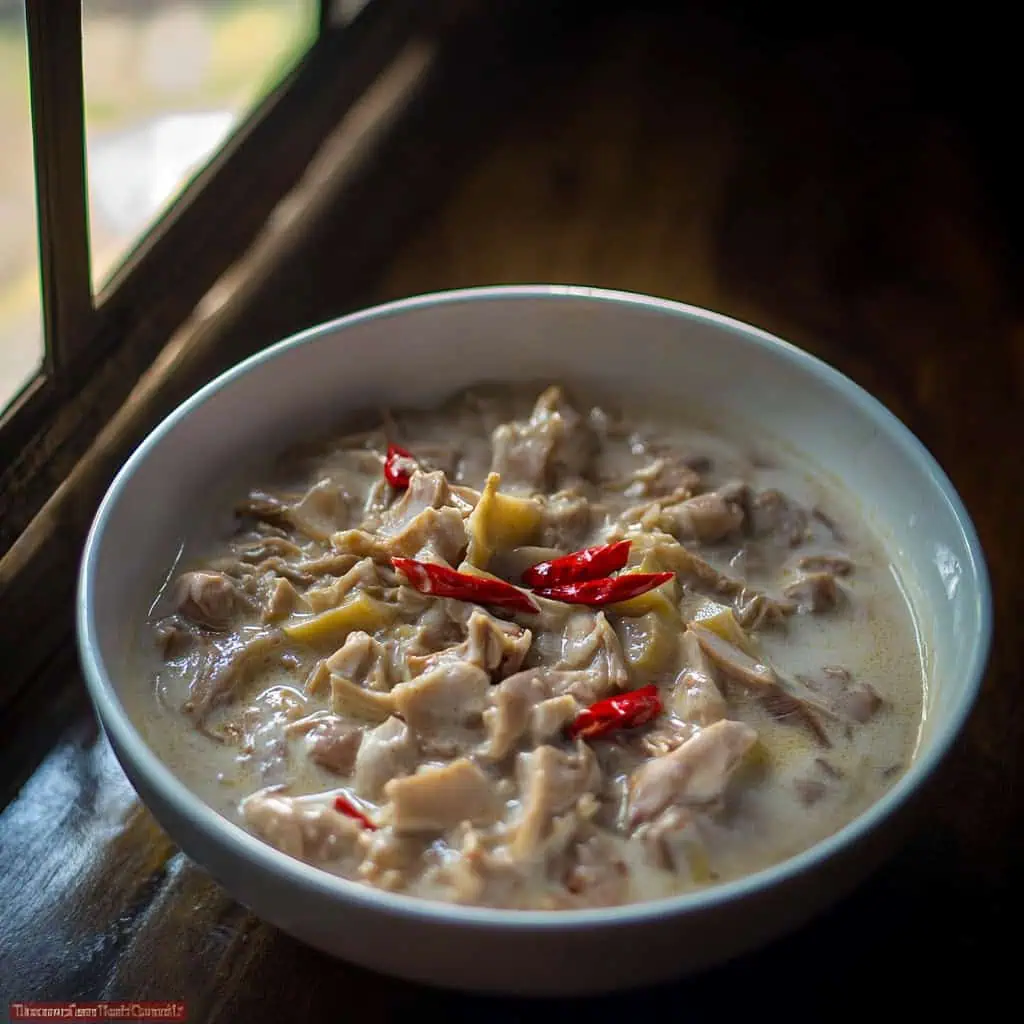





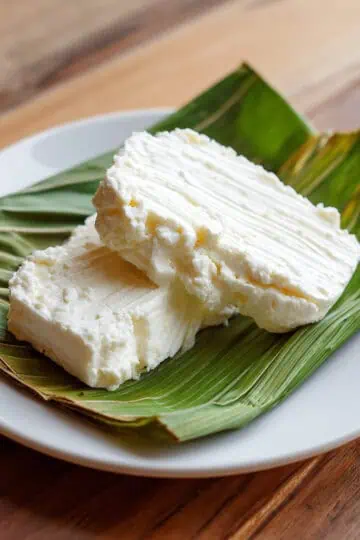
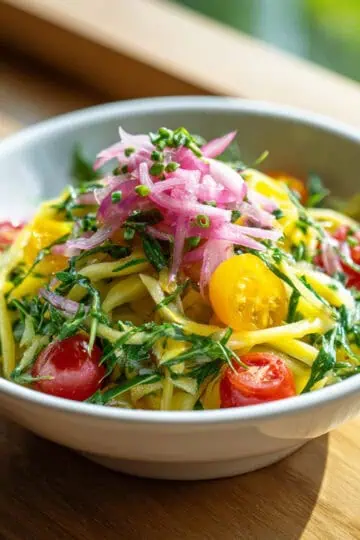
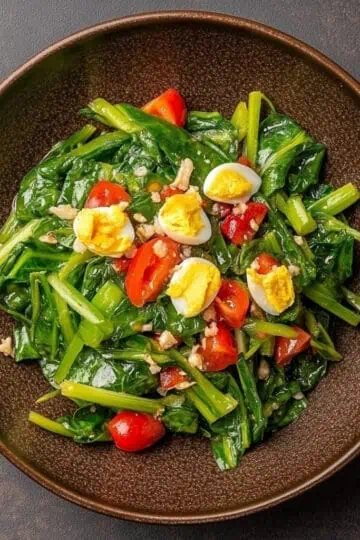
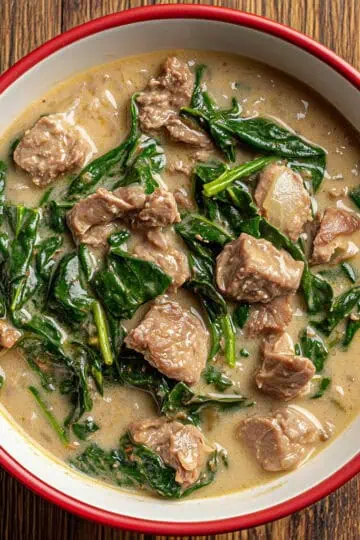
Comments
No Comments